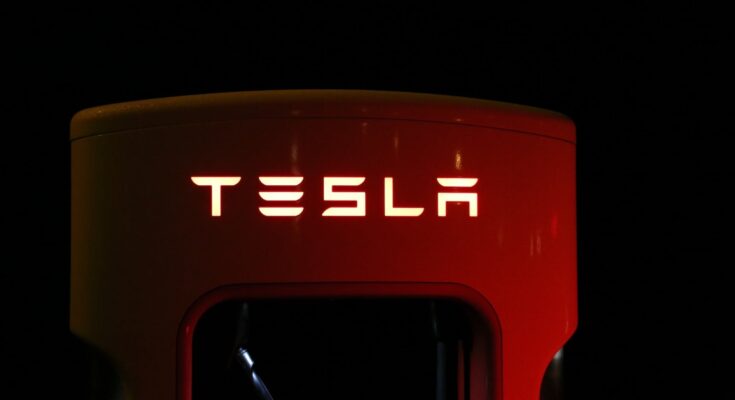The Automotive Lithium-ion Battery Cell by The Business Research Company provides market overview across 60+ geographies in the seven regions – Asia-Pacific, Western Europe, Eastern Europe, North America, South America, the Middle East, and Africa, encompassing 27 major global industries. The report presents a comprehensive analysis over a ten-year historic period (2010-2021) and extends its insights into a ten-year forecast period (2023-2033).
Learn More On The Automotive Lithium-ion Battery Cell Market:
According to The Business Research Company’s Automotive Lithium-ion Battery Cell, The automotive lithium-ion battery cell market size has grown exponentially in recent years. It will grow from $80.36 billion in 2023 to $102.11 billion in 2024 at a compound annual growth rate (CAGR) of 27.1%. The growth in the historic period can be attributed to rise of electric vehicles, government incentives, emission reduction targets, increasing consumer acceptance, scaling up production, collaborations and partnerships.
The automotive lithium-ion battery cell market size is expected to see exponential growth in the next few years. It will grow to $253.45 billion in 2028 at a compound annual growth rate (CAGR) of 25.5%. The growth in the forecast period can be attributed to ev market expansion, energy storage applications, government regulations, reduced battery costs, r&d investments. Major trends in the forecast period include increasing energy density, advancements in solid-state batteries, growth in electric vehicle (ev) adoption, supply chain diversification, recycling and sustainability initiatives, integration of battery management systems (bms).
The rising electrification of vehicles across the globe is expected to propel the growth of the automotive lithium-ion battery cell market going forward. Vehicle electrification is the process of using electricity to power a vehicle, replacing components that use a conventional energy source with components that use electricity. Lithium-ion batteries are commonly used in vehicle electrification due to their high energy density and ability to provide high power output as they can store large amounts of energy in a relatively small and lightweight package, self-discharge at a lower rate than other battery types making them ideal for vehicle electrification. For Instance, according to September 2022 published, Global EV Outlook 2022 report, published by International Energy Agency, a France-based autonomous intergovernmental organization, global electric vehicle (EV) sales had doubled from the previous year in 2021, reaching a new high of 6.6 million units sales. Additionally, the sales of electric car vehicles worldwide in 2021 have reached 6600000 units from 2980000 units. Therefore, the rising electrification of vehicles across the globe will drive the automotive lithium-ion battery cell market.
Get A Free Sample Of The Report (Includes Graphs And Tables):
https://www.thebusinessresearchcompany.com/sample.aspx?id=9496&type=smp
The automotive lithium-ion battery cell market covered in this report is segmented –
1) By Type: Lithium Iron Phosphate (LFP), Lithium Cobalt Oxide (LCO), Lithium Manganese Oxide (LMO), Lithium Nickel Manganese Cobalt Oxide (NMC)
2) By Cell Type: Cylindrical, Prismatic, Pouch Cells
3) By Application: Battery Electric Vehicle (BEV), Plug-In Hybrid Electric Vehicle (PHEV), Fuel-Cell Electric Vehicle
Technological advancements are a key trend gaining popularity in the automotive lithium-ion battery cell market. Major companies operating in the automotive lithium-ion battery cell market are focused on developing innovative solutions to strengthen their position in the market. For instance, in October 2022, Natrion Inc., a US-based automotive component and battery manufacturer revealed a patented solid-electrolyte separator, LISIC278, for use in Li-ion battery cells with graphite anodes for EV battery cells. The new material is a modified version of Natrion’s proprietary Lithium Solid Ionic Composite (LISIC) electrolyte designed to replicate the precise specs of a regular polyolefin separator while using the substantially less liquid electrolyte. It does this by providing strong ion transport capabilities at ambient temperatures while having a thermal resistance of more than 200°C and being completely dense (zero porosity). LISIC batteries have a near-zero fire risk, and the likelihood of a thermal incident worsening or expanding is considerably decreased.
The automotive lithium-ion battery cell market report table of contents includes:
- Executive Summary
- Automotive Lithium-ion Battery Cell Market Characteristics
- Automotive Lithium-ion Battery Cell Market Trends And Strategies
- Automotive Lithium-ion Battery Cell Market – Macro Economic Scenario
- Global Automotive Lithium-ion Battery Cell Market Size and Growth
.
.
.
- Global Automotive Lithium-ion Battery Cell Market Competitive Benchmarking
- Global Automotive Lithium-ion Battery Cell Market Competitive Dashboard
- Key Mergers And Acquisitions In The Automotive Lithium-ion Battery Cell Market
- Automotive Lithium-ion Battery Cell Market Future Outlook and Potential Analysis
- Appendix
Top Major Players:
- Samsung SDI Co. Ltd
- Contemporary Ampere Technology Co. Ltd
- LG Chem Ltd
- GS Yuasa International Ltd
- ohnson Controls International PLC
Contact Us:
The Business Research Company
Europe: +44 207 1930 708
Asia: +91 88972 63534
Americas: +1 315 623 0293
Email: [email protected]
Follow Us On:
LinkedIn: https://in.linkedin.com/company/the-business-research-company
Twitter: https://twitter.com/tbrc_info
Facebook: https://www.facebook.com/TheBusinessResearchCompany
YouTube: https://www.youtube.com/channel/UC24_fI0rV8cR5DxlCpgmyFQ
Blog: https://blog.tbrc.info/
Healthcare Blog: https://healthcareresearchreports.com/
Global Market Model: https://www.thebusinessresearchcompany.com/global-market-model




